Everything about Centipedes

| Everything About Centipedes | |
|---|---|
| Feature | Description |
| Types | House centipedes, Stone centipedes, Soil centipedes, etc. |
| Size | Vary from small (less than 1 inch) to large (up to 12 inches in some tropical species). |
| Common Habitats | Moist environments like soil, under stones, leaf litter, or rotting wood. |
| Diet | Insects, spiders, and other small animals. They use venom to paralyze their prey. |
| Behavior | Primarily nocturnal. Fast movers and can be aggressive when threatened. |
Dissecting Centipedes Anatomy
Centipedes, belonging to the class Chilopoda, are elongated, segmented arthropods known for their numerous legs. Despite their name, which translates to “hundred legs”, centipedes can have a varying number of legs ranging from 30 to over 300, depending on the species. Let’s break down their anatomy:
Head
Trunk (Body Segments)
Hind Segment (Last Segment)
Internal Anatomy
Head
- Antennae: Centipedes have a pair of long, segmented antennae that they use to sense their environment. These are essential for detecting prey and understanding their surroundings.
- Compound Eyes: Not all centipedes have compound eyes, but those that do use them for light detection and movement. Some species, especially those that live underground, might be blind and lack eyes altogether.
- Mandibles: These are the mouthparts of the centipede, used to consume food.
- Maxillipeds: These are a modified pair of legs located on the first body segment, right behind the head, which house the venom glands. They’re used to grasp prey and deliver venom.
Trunk (Body Segments)
- Legs: The number of leg pairs varies among species. Interestingly, centipedes always have an odd number of leg pairs. The legs increase in length from the front to the rear of the body, aiding in locomotion without tangling.
- Spiracles: Found on most body segments, these are small openings that lead to the tracheal system for respiration.
- Tergites: These are the dorsal plates of the body segments. They provide protection and are often thicker than the ventral plates.
- Coxal Pores: These are glandular structures involved in excretion and are found on the ventral side of the centipede.
Hind Segment (Last Segment)
- Anal Setae: This refers to a pair of modified legs on the last segment, which are usually elongated and sensory in nature.
- Reproductive Organs: The opening for the reproductive organs is located on the ventral side of the segment with the last pair of legs.
Internal Anatomy
Digestive System: Centipedes have a simple tube-like digestive system that runs from the mouth to the anus.
- Circulatory System: They possess an open circulatory system with a dorsal heart that pumps blood (hemolymph) throughout the body.
- Nervous System: Centipedes have a ventral nerve cord with a ganglion in each body segment and a brain in the head region.
How Do I Get Rid Of Centipedes?
To address a centipede issue, eliminate damp spaces and seal entry points in your home. Regular cleaning and removing debris from the house perimeter can also help.
For minor occurrences, DIY methods might suffice. However, if the infestation intensifies or DIY methods fail, it’s advisable to opt for professional Centipede Control & Removal services.
Experts in this field offer specialized treatments, ensuring effective and long-term solutions to centipede challenges.
What are the most common types of Centipedes
in Canada?
Canada, given its varied climates and habitats, hosts a variety of centipede species. However, while there are many species of centipedes found around the world, only a subset of these are commonly encountered in Canada. Some of the most common types of centipedes in Canada include:
Stone Centipedes (Order lthobiomorpha)
House Centipedes (Order scutigeromorpha)
Soil Centipedes (Order geophilomorpha)
Short-flanged Centipedes (Order scolopendromorpha)

Stone Centipedes
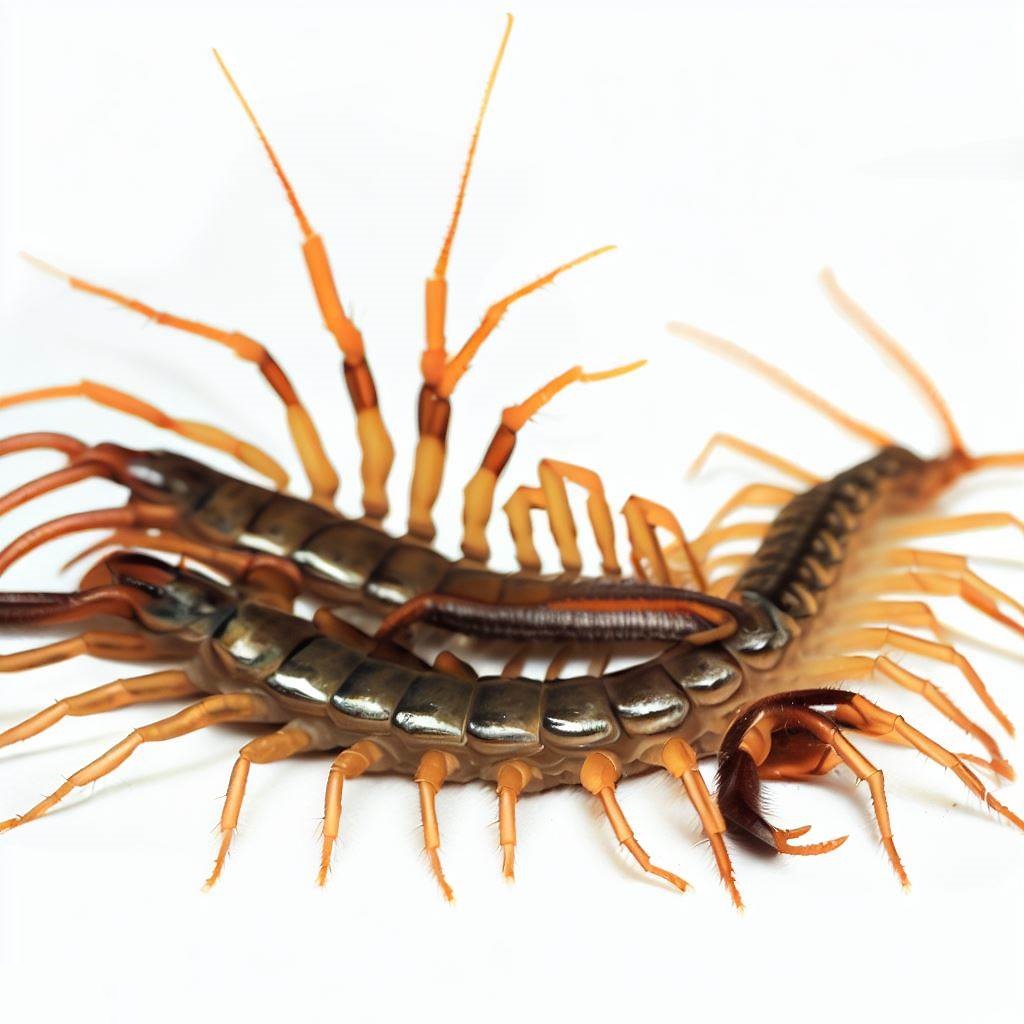
House Centipedes
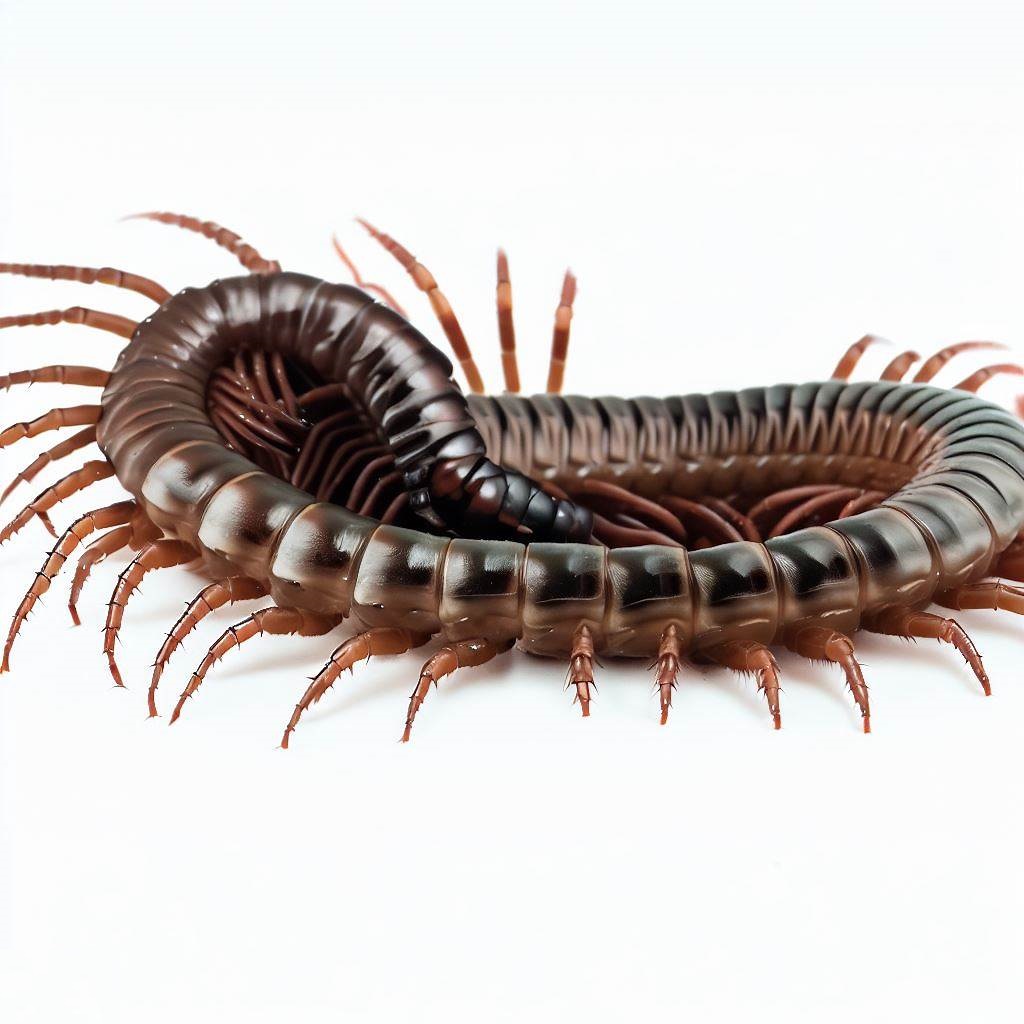
Soil Centipedes
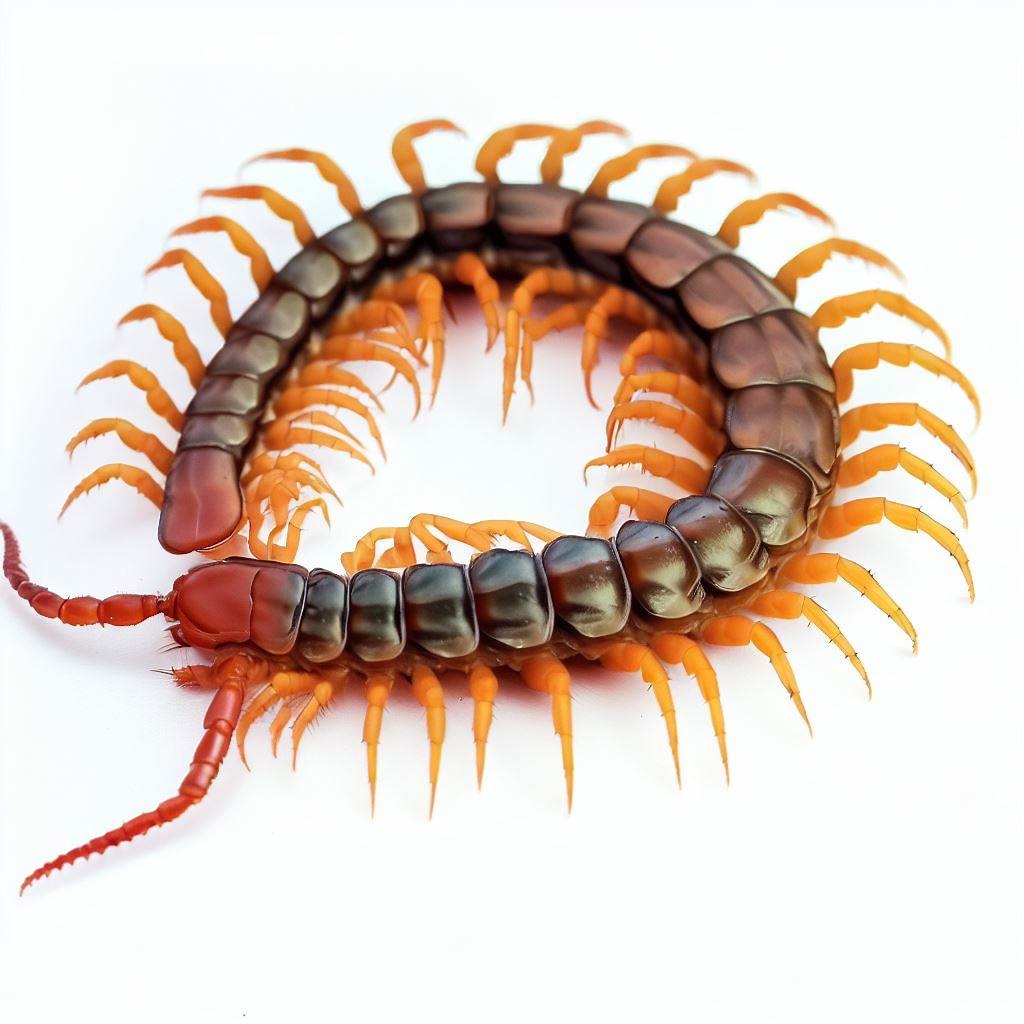
Short-flanged Centipedes
Call us for a Free Centipedes Inspection
What are the characteristics of Stone Centipedes?
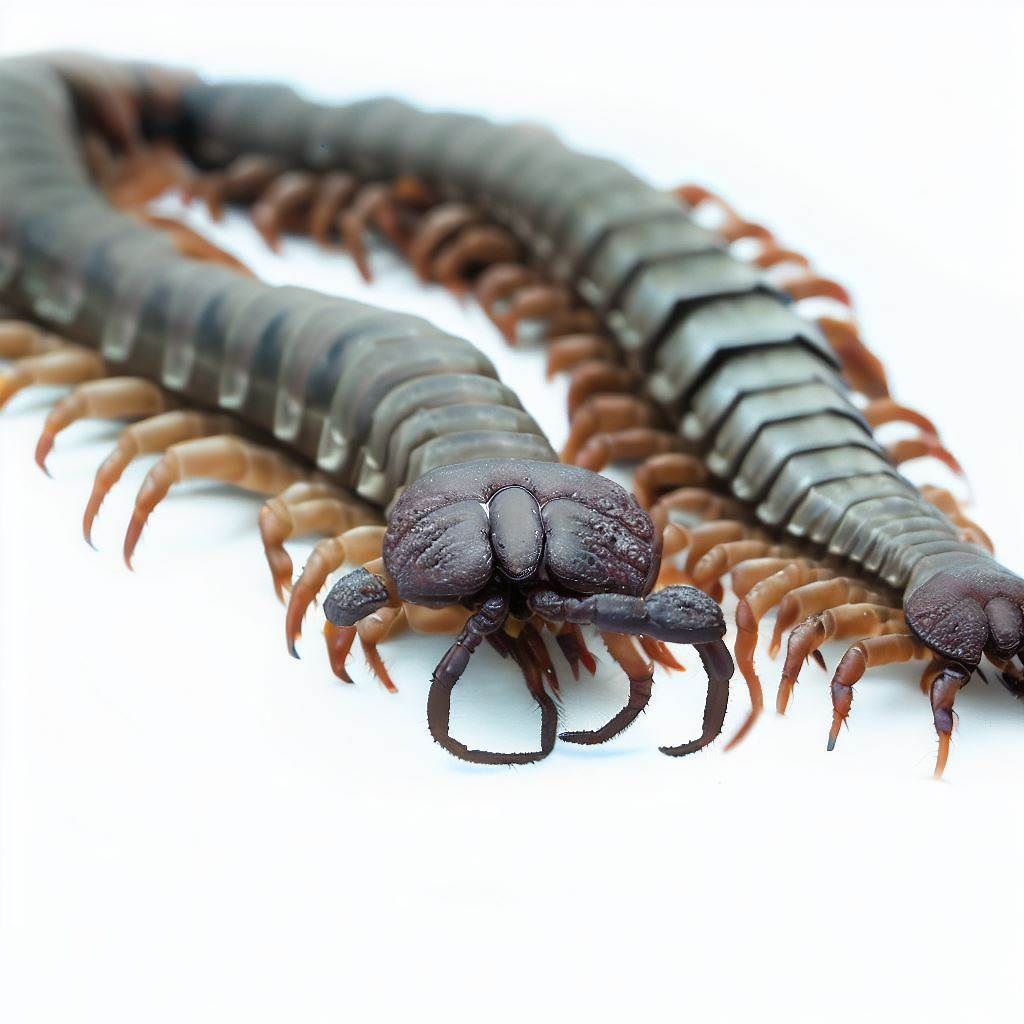
| Characteristics of Stone Centipedes | |
|---|---|
| Feature | Description |
| Size | Adults typically range from 20 to 30 mm in length. |
| Color | Brown to reddish-brown. |
| Shape | Elongated with segmented body. |
| Legs | 15 pairs of legs, with one pair per body segment. |
| Eyes | Simple eyes (ocelli) arranged in clusters. |
| Antennae | Prominent and segmented, used for sensing the environment. |
| Habitat | Commonly found under rocks, logs, and leaf litter in both moist and dry environments. |
| Diet | Carnivorous, feeding on various small insects and other arthropods. |
What are the characteristics of House Centipedes?
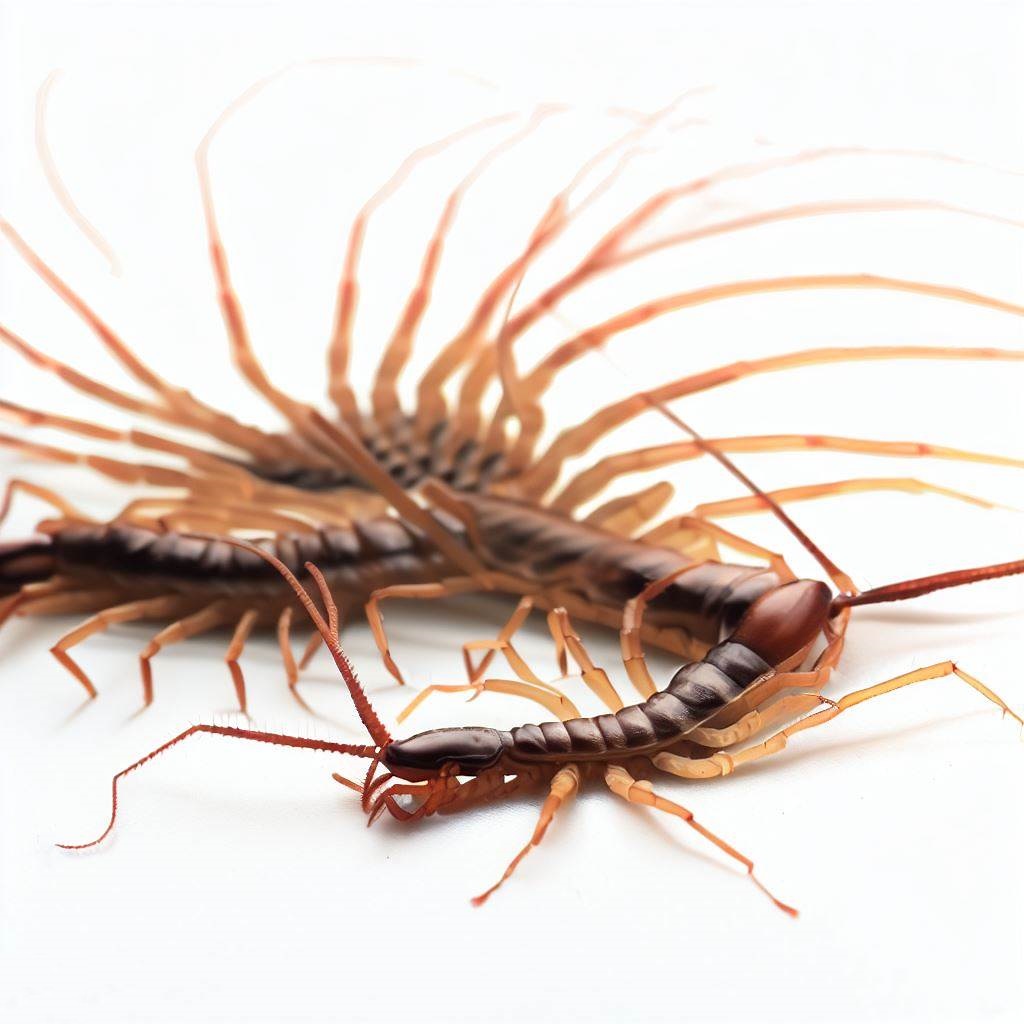
| Characteristics of House Centipedes | |
|---|---|
| Feature | Description |
| Size | Adults typically range from 25 to 35 mm in length. |
| Color | Yellowish-grey with three dark stripes. |
| Shape | Flattened and elongated with segments becoming smaller towards the end. |
| Legs | 15 pairs of very long, slender legs. The last pair in adult females can be twice the length of the body. |
| Speed | Swift runners. |
| Eyes | Well-developed, faceted eyes. |
| Antennae | Long and sensitive. |
| Habitat | Inside homes (damp areas) and outside under logs, rocks. |
| Diet | Carnivorous, feeding on spiders, bedbugs, termites, and other small insects. |
What are the characteristics of Soil Centipedes?
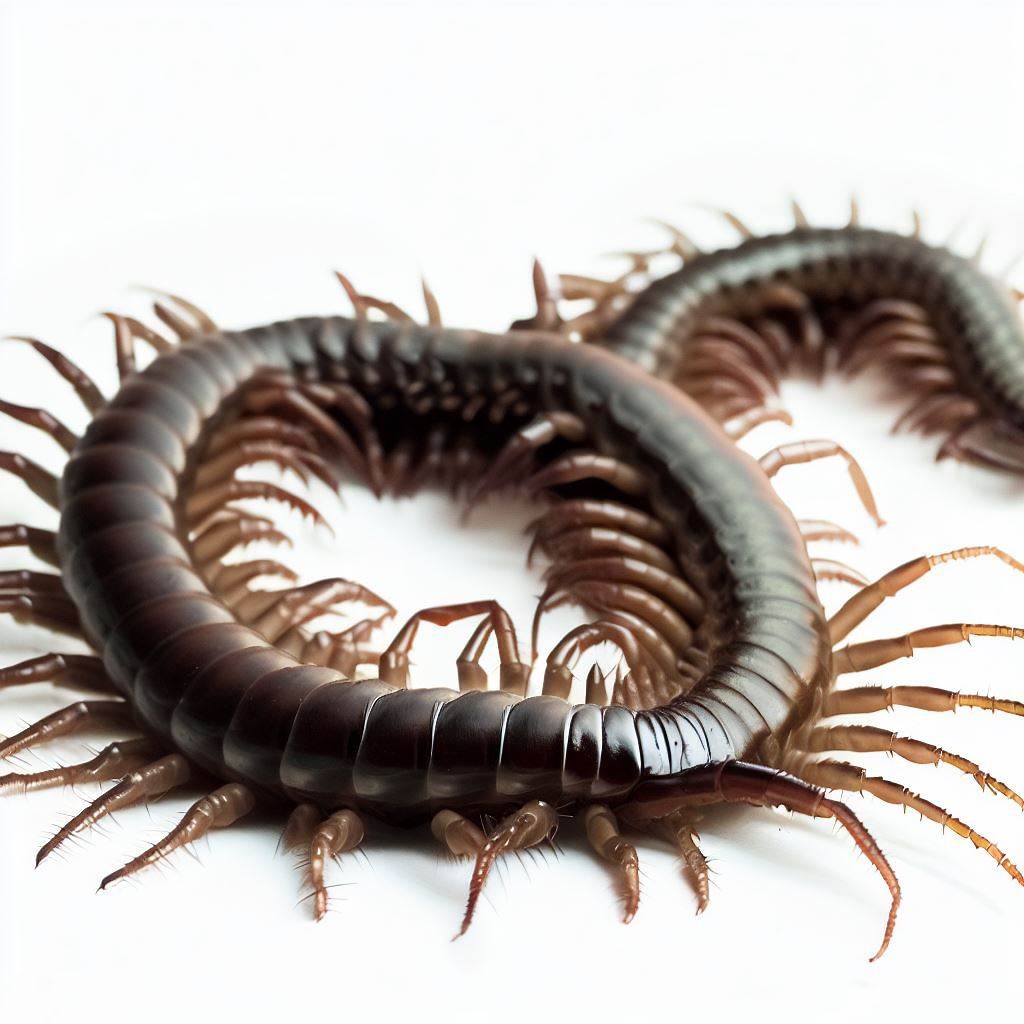
| Characteristics of Soil Centipedes | |
|---|---|
| Feature | Description |
| Size | Varies, but many species are between 20 to 60 mm in length. |
| Color | Typically brown to pale yellow, depending on species and soil type. |
| Shape | Elongated, worm-like body with numerous body segments. |
| Legs | Many leg pairs, ranging from 27 to over 190 pairs depending on species. |
| Eyes | Most species lack eyes and rely on other sensory organs. |
| Antennae | Shorter compared to other centipedes and have sensory function. |
| Habitat | Commonly found in soil, leaf litter, and under stones; prefer moist environments. |
| Diet | Carnivorous, feeding mainly on small insects, worms, and other soil-dwelling organisms. |
What are the characteristics of Short-flanged Centipedes?
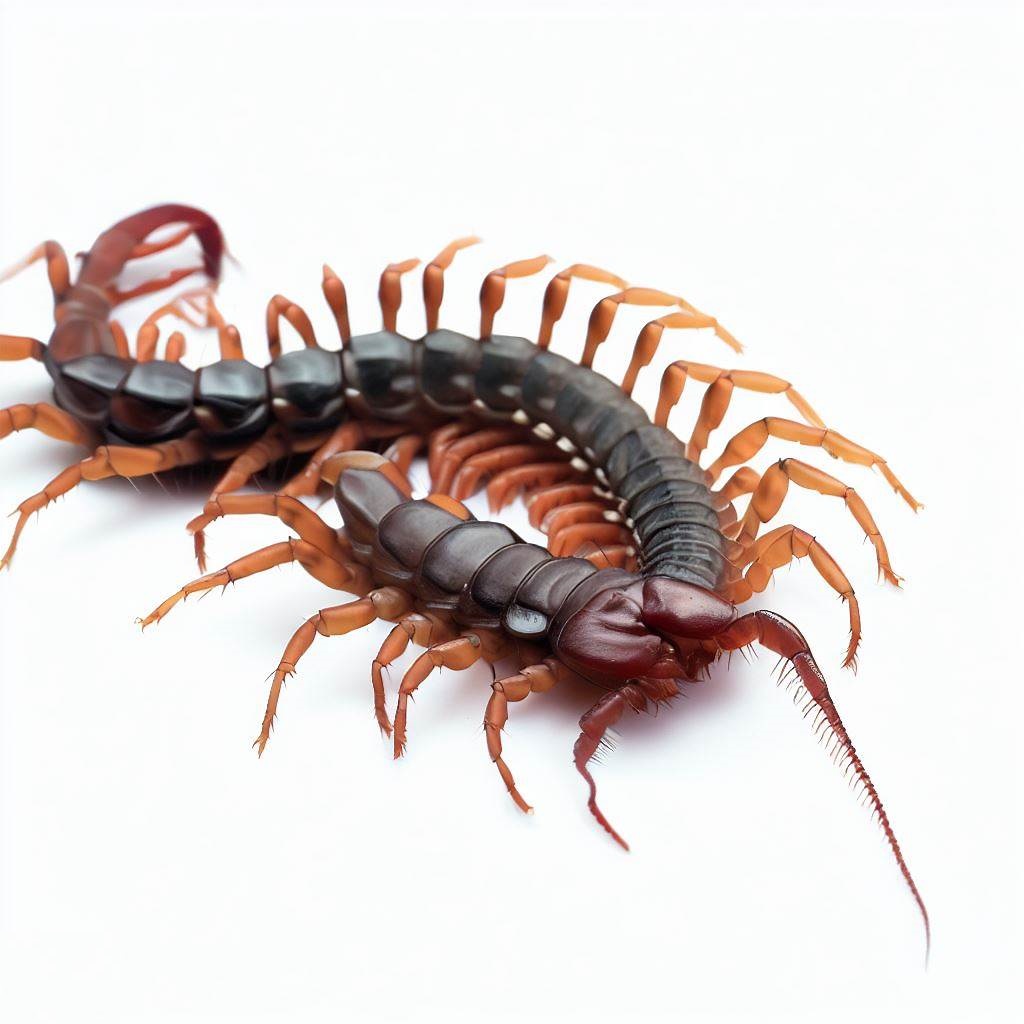
| Characteristics of Short-Flanged Centipedes | |
|---|---|
| Feature | Description |
| Size | Adults typically range from 25 to 50 mm in length. |
| Color | Dark brown to black. |
| Shape | Elongated with a segmented body. |
| Legs | 21 or 23 pairs of legs, depending on the species. |
| Eyes | They possess a unique ocular structure not found in other centipedes. |
| Antennae | Moderate in length and segmented. |
| Habitat | They are found in very specific regions, primarily in Tasmania and New Zealand. They prefer humid microenvironments and are often found under rocks and logs. |
| Diet | Carnivorous, feeding on smaller insects and other soil-dwelling organisms. |
Call us for a Free Centipedes Inspection
Top Tips To Prevent Centipedes Infestations: Essential Guide
1. Reduce Humidity and Moisture: Centipedes thrive in damp and humid environments. Use dehumidifiers in basements or other damp areas in your home. Fix any leaky pipes or faucets to eliminate moisture sources.
2. Seal Entry Points: Make sure all cracks, crevices, and gaps in your home’s foundation, walls, and windows are sealed. This will not only prevent centipedes but also other pests from entering your home.
3. Clear Clutter: Remove piles of leaves, grass clippings, and wood from the perimeter of your home. Inside, reduce clutter in basements and closets, as centipedes often hide in dark and secluded areas.
4. Regular Cleaning: Vacuum and sweep regularly, especially in corners and under furniture. This helps to get rid of small pests that centipedes feed on, thereby making your home less attractive to them.
5. Pest Control: Consider natural repellents or professional pest control measures if you’re in an area with a high centipede population. This will help manage not only centipedes but also other pests that might be attracting them.
Frequently Asked Questions about Centipedes
Yes, most centipedes possess venom glands and use their venom to subdue their prey. However, while a bite from some larger species can be painful to humans, it’s generally not medically significant unless one is allergic.
Centipedes are often drawn to homes because they offer a damp, sheltered environment and a steady supply of food. Basements, bathrooms, and other areas with high humidity can attract them. They feed on other small pests, so their presence might indicate other pest infestations.
While both belong to the group of myriapods, they are quite different. Centipedes are generally more flattened and have one pair of legs per body segment. They are often faster and are predators. Millipedes, on the other hand, have a more rounded body and two pairs of legs per body segment. They are slower, and many feed on decaying organic matter.
